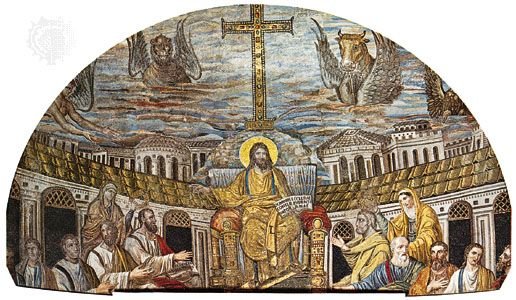The Moon in Biblical Context
The moon holds great significance in the Bible, symbolizing various aspects of God’s creation and marking time. Its presence and celestial beauty have captivated humanity for centuries, and its mention in the Bible provides insights into its spiritual and symbolic meaning.
The Significance of the Moon in the Bible
In the Bible, the moon is often associated with light and illumination. In Genesis 1:16, it is written, “God made two great lights—the greater light to govern the day and the lesser light to govern the night.” This verse highlights the moon’s role as a source of light during the night, contrasting with the sun, which governs the day. The moon’s gentle glow in the darkness serves as a reminder of God’s provision and guidance even in the darkest times.
Moreover, the moon is often connected to the concept of seasons and appointed times. In Psalm 104:19, it states, “He made the moon to mark the seasons; the sun knows its time for setting.” This verse emphasizes the moon’s role in defining the passing of time and the changing of seasons. The moon’s phases, from new moon to full moon and back again, serve as a heavenly calendar, reminding us of the cyclical nature of life and the order established by God.
The Moon as a Symbol of God’s Creation
As a celestial body created by God, the moon symbolizes His power and creativity. Its presence in the night sky is a testament to God’s intricate design and attention to detail. The moon’s perfect spherical shape, its gravitational influence on tides, and its harmonious orbit around the Earth all reflect the divine wisdom and order in creation.
The moon’s beauty and splendor also evoke a sense of awe and wonder. In Psalm 8:3-4, the psalmist exclaims, “When I look at your heavens, the work of your fingers, the moon and the stars, which you have set in place, what is man that you are mindful of him?” This passage highlights the moon’s role as a heavenly spectacle that points to the majesty and greatness of God.
The Moon’s Role in Marking Time
Throughout the Bible, the moon is often referenced in relation to the observance of festivals and appointed times. For example, the Jewish calendar follows a lunar cycle, with the new moon marking the beginning of each month. The sighting of the new moon was crucial for determining the timing of religious observances, such as Passover and the Feast of Trumpets.
Additionally, the moon’s phases served as a guide for agricultural practices in ancient times. Farmers relied on the moon’s cycles to determine the best times for planting, harvesting, and other agricultural activities. The moon’s influence on the Earth’s tides also played a role in fishing and maritime activities.

The moon’s role in marking time and guiding human activities underscores the intricate balance between nature and spirituality. Its presence in the celestial realm serves as a reminder of God’s sovereignty and the ordered rhythm of life.
Misinterpretations and Superstitions
The moon has long been a subject of fascination and intrigue, and throughout history, it has been associated with various misconceptions, superstitions, myths, and legends. While the Bible provides guidance and wisdom, it is important to approach its teachings with careful interpretation, as certain passages can be misunderstood when it comes to the moon.
Misconceptions about the Moon in the Bible
One common misconception is the belief that the moon is evil or associated with darkness in the Bible. However, this is not the case. In the book of Genesis, during the creation story, God specifically states that the moon is a “lesser light to govern the night” (Genesis 1:16). The moon is not portrayed as evil, but rather as a divine creation that serves a purpose in God’s design.
Another misconception arises from verses in the Old Testament, such as Deuteronomy 4:19, which warns against worshiping the sun, moon, and stars. This passage emphasizes the prohibition of idolatry, not the inherent evil of celestial bodies. The Bible acknowledges the moon’s role in marking time, but it does not attribute any negative connotations to it.
Superstitions Surrounding the Moon
Throughout cultures and civilizations, superstitions have developed around the moon. One common belief is that a full moon can induce madness or strange behavior in humans. This notion has led to the term “lunatic” being associated with someone who exhibits erratic behavior. However, scientific studies have shown no correlation between the phases of the moon and human behavior.
Superstitions also exist regarding the impact of the moon on natural phenomena. Some cultures believe that a full moon can cause increased crime rates or more accidents. These beliefs, however, lack scientific evidence and are considered unfounded superstitions.
Common Myths and Legends
The moon has inspired numerous myths and legends across different cultures. In Greek mythology, for example, the moon is associated with the goddess Selene, who is believed to ride her moon chariot across the night sky. In Norse mythology, the moon is associated with the god Mani, who is said to be chased by a wolf named Hati.
Furthermore, some ancient cultures regarded lunar eclipses as ominous events and interpreted them as a sign of impending doom. These beliefs often led to rituals and ceremonies aimed at appeasing the perceived malevolent forces associated with eclipses.
It is important to recognize that these myths and legends are rooted in cultural beliefs and should not be taken as literal interpretations of the moon’s nature or significance in the biblical context.
The Moon’s Spiritual Symbolism
The moon has long held a significant place in spiritual and religious beliefs, symbolizing various aspects of human existence. Its enigmatic presence in the night sky has captivated cultures throughout history, giving rise to rich symbolism and interpretations. In the realm of spirituality, the moon is often associated with light and darkness, emotional influence, and worship in ancient cultures.
The Moon as a Representation of Light and Darkness
The moon’s cyclical nature of waxing and waning has led to its association with the duality of light and darkness. In many spiritual traditions, the moon represents both the light of enlightenment and the darkness of the unknown. It serves as a reminder that life is a balance between light and shadow, and that we must embrace both aspects to achieve wholeness. The moon’s gentle glow in the night sky has inspired poets and mystics to reflect upon the mysteries of life and the interplay between light and darkness within the human soul.
The Moon’s Influence on Human Emotions
Across cultures, the moon has been believed to have a profound influence on human emotions. From ancient times, people have associated the moon phases with changes in mood and behavior. Scientifically, the moon’s gravitational pull affects the tides, and some believe it also influences the water within our bodies, which can impact our emotions. Whether it is the serene beauty of a full moon inspiring feelings of calm and reflection or the intense energy of a new moon sparking creativity and transformation, the moon’s influence on emotions is a subject of fascination and contemplation.
Moon Worship in Ancient Cultures
Throughout history, various cultures have revered the moon as a deity and engaged in moon worship. In ancient civilizations such as Mesopotamia, Egypt, and Mesoamerica, the moon was often associated with a goddess or god of fertility, agriculture, and the cycles of life. Worshipping the moon was a way to honor the natural rhythms of the Earth and seek its blessings for a fruitful existence. The moon’s regular phases and its association with the feminine have also linked it to concepts of rebirth, renewal, and the cyclical nature of life.
The moon’s gentle glow in the night sky has inspired poets and mystics to reflect upon the mysteries of life and the interplay between light and darkness within the human soul.
Curiosities and Lesser-Known Facts
- The moon’s impact on tides and water bodies has led some to believe it affects human fertility and menstrual cycles.
- Many ancient cultures used lunar calendars to track time and determine auspicious dates for rituals and ceremonies.
- The term “lunatic” derives from the Latin word “luna,” meaning moon, and was historically associated with madness believed to be influenced by the moon.
- In astrology, the moon represents the subconscious mind, emotions, and intuition.
- Some Native American tribes referred to the full moon in each month with unique names, reflecting the changing seasons and the activities happening during that time.
From its symbolism of light and darkness to its influence on human emotions and its worship in ancient cultures, the moon holds a special place in the realm of spirituality. Its ever-changing phases and ethereal beauty continue to inspire contemplation and wonder, inviting us to explore the deeper aspects of our own existence.


Rockin’ the faith, one verse at a time!
Growing up, the Bible’s stories deeply impacted me. Now, with over 15 years of preaching experience, I blend timeless teachings with modern technology, making them relevant for today’s world.
Bible Hub Verse is my platform to share historical insights and thought-provoking articles, exploring both familiar and uncommon Christian topics. My passion is building a welcoming online space for everyone to learn, grow in their faith, and discover the Bible’s enduring message.
Join the journey!
God bless you.






